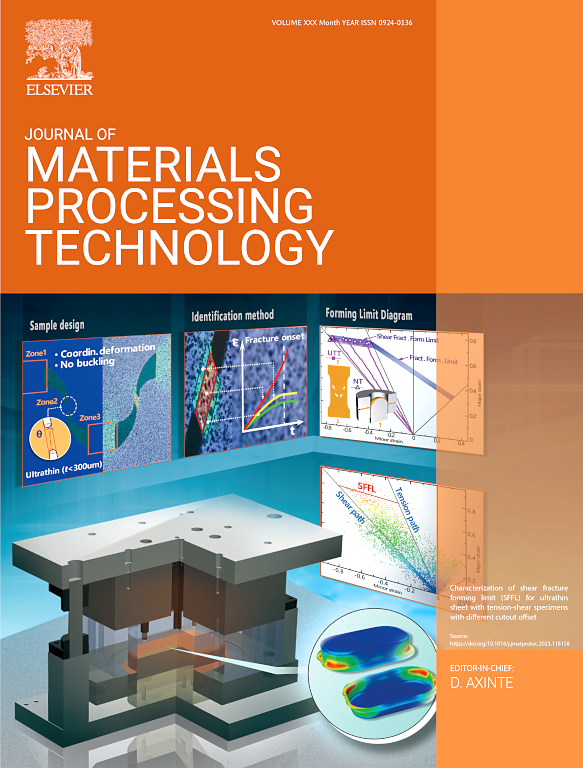A double ignition strategy for enhanced efficiency in atmospheric plasma machining
IF 6.7
2区 材料科学
Q1 ENGINEERING, INDUSTRIAL
Journal of Materials Processing Technology
Pub Date : 2025-01-25
DOI:10.1016/j.jmatprotec.2025.118746
引用次数: 0
Abstract
Due to the advantages of high efficiency, low cost and versatile operation, atmospheric plasma machining has drawn significant attention in the field of semiconductor and optical fabrication. Nevertheless, for conventional atmospheric plasma machining sources feature low temperature, the machining efficiency is limited due to the low gas ionization rate. This paper presents a novel double ignition strategy based on coupled coupling plasma (CCP) for enhanced radical concentration and machining efficiency. The double ignition plasma jet (DIPJ) enhances electron concentration and promotes the dissociation of fluorine radicals compared to single ignition plasma jet (SIPJ), exhibiting higher removal efficiency. Afterwards, the jet characteristics are significantly affected by regulating the electric field distribution of DIPJ through adjusting the structural parameters, which further promotes the ignition strength and radical generation. With the optimization of ignition configuration and process parameters, a Gaussian removal function can be obtained and the material removal rate (MRR) can be reached over 0.4 mm3/min at a full width at half maximum (FWHM) of 4.8 mm. The form error of a 100 × 50 mm2 Si planar mirror can be reduced from 150.41 nm to 19.36 nm RMS within 7.9 min after one iteration of figuring, which demonstrates the high processing efficiency optical manufacturing.
求助全文
约1分钟内获得全文
求助全文
来源期刊

Journal of Materials Processing Technology
工程技术-材料科学:综合
CiteScore
12.60
自引率
4.80%
发文量
403
审稿时长
29 days
期刊介绍:
The Journal of Materials Processing Technology covers the processing techniques used in manufacturing components from metals and other materials. The journal aims to publish full research papers of original, significant and rigorous work and so to contribute to increased production efficiency and improved component performance.
Areas of interest to the journal include:
• Casting, forming and machining
• Additive processing and joining technologies
• The evolution of material properties under the specific conditions met in manufacturing processes
• Surface engineering when it relates specifically to a manufacturing process
• Design and behavior of equipment and tools.
 求助内容:
求助内容: 应助结果提醒方式:
应助结果提醒方式:


